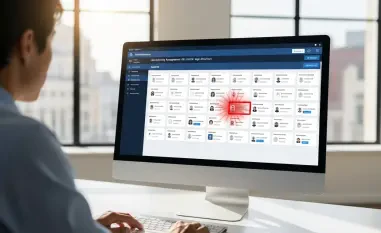A recent exposé on security vulnerabilities within Palo Alto Networks’ firewalls has caused quite a concern in the cybersecurity community, highlighting the ongoing need for rigorous security practices. These vulnerabilities were primarily uncovered by Eclypsium, a renowned enterprise firmware and hardware security company. The investigation revealed several issues particularly affecting three Palo Alto models: PA-3260, PA-1410, and PA-415. Among the identified vulnerabilities were the infamous BootHole, issues related to System Management Mode (SMM), along with LogoFAIL and PixieFail, all posing unique threats to the affected devices.
Understanding the BootHole Vulnerability
The BootHole vulnerability, associated with the GRUB2 bootloader, enables the installation of persistent malware on affected systems. To exploit this vulnerability, an attacker must have elevated privileges, which means gaining root access to the Linux-based PAN-OS devices. This requires a sophisticated attack vector, as recognized by Palo Alto Networks, which underscores the necessity for an attacker to gain root Linux privileges. Eclypsium pointed out that attackers could leverage two recently disclosed PAN-OS vulnerabilities (CVE-2024-0012 and CVE-2024-9474), both having been exploited in real-world scenarios, to achieve such access. These findings highlight the need for stringent security measures to prevent initial system compromise.
Despite acknowledging the presence of BootHole, Palo Alto Networks stressed that exploitation would not be straightforward. Proper security practices and robust system monitoring are paramount in mitigating risks. The company’s advisory emphasizes a proactive approach to system security, urging administrators to keep firmware and security protocols up to date. The nature of BootHole necessitates pre-existing access and manipulation in PAN-OS devices, underscoring the layered security approach required to safeguard enterprise systems from this vulnerability.
SMM Vulnerabilities in Insyde##O UEFI Firmware
The PA-3260 model, as per Eclypsium’s findings, is affected by System Management Mode (SMM) vulnerabilities in Insyde##O UEFI firmware. These vulnerabilities can potentially facilitate privilege escalation and bypass secure boot mechanisms. Palo Alto Networks acknowledges these issues and is actively working with third-party vendors to deploy necessary firmware updates. This collaboration aims to address identified vulnerabilities while laying out a clearer path for preventative measures in the future. Importantly, the company has reassured its users that other firewall models remain unaffected by these particular issues.
Furthermore, Palo Alto Networks emphasizes the importance of keeping systems updated with the latest patches provided by firmware vendors. The company’s multi-tiered security framework aims to enhance endpoint defenses and reduce the attack surface effectively. While addressing SMM vulnerabilities, the focus remains on swift response and fortifying current security postures. The inherent complexity of such vulnerabilities further illustrates the critical nature of maintaining up-to-date, resilient cybersecurity practices across all endpoints.
LogoFAIL and PixieFail: Assessing the Threats
Eclypsium also identified LogoFAIL, a vulnerability that allows attackers to compromise devices through malicious UEFI logo images. Interestingly, Palo Alto Networks denied any susceptibility to this issue, clarifying that PAN-OS lacks the necessary conditions for exploitation. Meanwhile, similar dismissals were issued for PixieFail vulnerabilities since the BIOS network stack remains disabled in Palo Alto’s products. These findings highlight the importance of accurately assessing threat capabilities and the specific conditions required for exploitations to materialize.
In response to the identified vulnerabilities, Palo Alto Networks remains resolute in its commitment to ensuring the highest levels of security for its users. The company’s transparency in addressing potential threats plays a crucial role in maintaining trust and credibility in its security solutions. Such proactive measures demonstrate Palo Alto Networks’ dedication to continuous improvement and threat mitigation, reinforcing why consistent security updates and vigilance are imperative in the ever-evolving field of cybersecurity.













